はじめに
この研究の目的は、ストレス性尿失禁(SUI)の問題に直面しているエリート女性アスリート(EFAs)の中で、スポーツへの復帰が成功する要因を特定することでした。我々はこれらの予測要因を分析するために機械学習を使用しました。
方法
この研究は、神奈川県横須賀市にある横須賀泌尿器科クリニックで実施されました。後期産後のSUIを経験する153人のエリート女性アスリートが、この後ろ向きコホート研究に含まれました。骨盤底筋トレーニング(PFMT)の頻度、治療アプローチ、1年後のスポーツへの復帰率、および3ヶ月後の1時間パッドテスト(1HrPadtest)に関する情報が収集されました。
結果
3ヶ月後には、EFAsのうち26.8%がSUIの改善を示しました。1年後には、28.1%がそれぞれのスポーツへの成功した復帰を果たしました。スポーツへの復帰を予測するための方程式(logit(p))には、いくつかの要因が含まれました:(a)血清総テストステロン、(b)週ごとのPFMTの頻度、(c)3ヶ月後の1HrPadtestの結果、および(d)膣内エルビウムドープイットリウムアルミニウムガーネットレーザー(VEL)+ 尿道EL(UEL)治療。方程式は次の通りです:-126 – 0.07276a + 25.98b – 1.947c – 25.32dで、logit(p)のカットオフポイントは0.5です。最適なカットオフ値と4つの影響を与える要因は、受信者動作特性(ROC)分析とランダムフォレストモデルによって決定されました。
結論
重度のSUIに悩むEFAsがスポーツ活動を成功裏に再開するためには、PFMTの頻度が重要でした。3ヶ月時点で1HrPadtestの結果が不満足だった患者は、VEL+UEL治療による改善が見られました。血清総テストステロンは有効な識別基準となりました。
Introduction
The objective of this research was to identify key indicators for the favorable resumption of sports participation among accomplished female athletes encountering issues of stress-related urinary incontinence (SUI). Utilizing advanced machine learning techniques, we conducted an analysis of these predictive markers.
Methods
This investigation was carried out at the Yokosuka Urogynecology and Urology Clinic, situated in Yokosuka City, Kanagawa, Japan. A total of 153 skilled female athletes experiencing postpartum SUI were enrolled in this retrospective observational study. Data encompassing the frequency of exercises targeting the pelvic floor muscles (PFMT), various treatment modalities, rates of reengagement in sporting activities after a year, as well as outcomes of a one-hour pad test (1HrPadtest) conducted at the three-month juncture, were gathered.
Reseult
Within three months, a noteworthy 26.8% of the female athletes demonstrated improvements in their SUI symptoms. Following the one-year timeline, a commendable 28.1% achieved a successful return to their respective sports endeavors. The predictive model for gauging the likelihood of resuming sports engagement (logit(p)) took into account several factors: (a) levels of serum total testosterone, (b) weekly frequency of PFMT sessions, (c) results from the 1HrPadtest at the three-month milestone, and (d) utilization of vaginal erbium-doped yttrium aluminum garnet laser (VEL) in conjunction with urethral EL (UEL) treatment. The model equation can be articulated as: -126 – 0.07276a + 25.98b – 1.947c – 25.32d, with a logit(p) threshold set at 0.5. The most effective threshold values, alongside the four influential factors, were determined through an analysis utilizing the receiver operating characteristic (ROC) methodology and the random forest model.
Conclusions
For accomplished female athletes contending with severe SUI, the frequency of PFMT sessions emerged as a pivotal determinant in achieving successful resumption of sports activities. Individuals who displayed unsatisfactory outcomes in the 1HrPadtest at the three-month interval exhibited positive outcomes with the VEL+UEL treatment approach. The measurement of serum total testosterone also stood out as a robust distinguishing criterion.
Key Terms: artificial intelligence and automation in healthcare, erbium laser therapy for urinary incontinence, advanced laser treatment for female incontinence, AI language model, serum total testosterone levels, exercises for pelvic floor muscles, stress-related urinary incontinence, accomplished women athletes
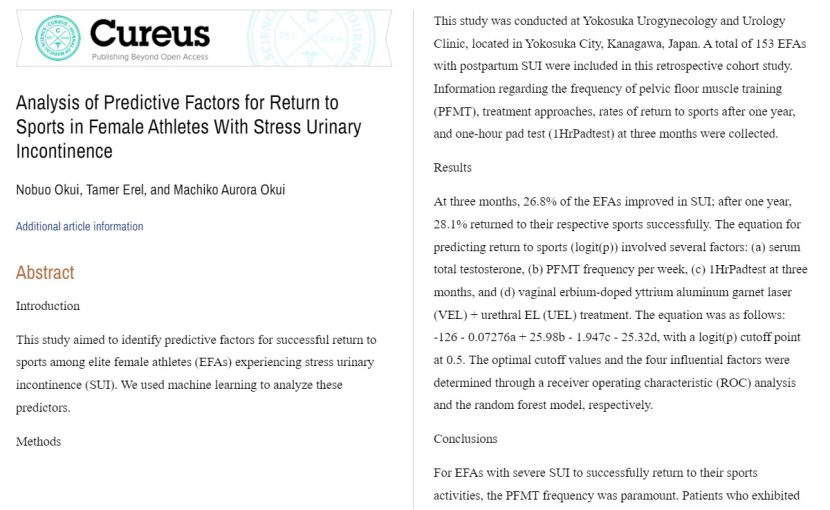
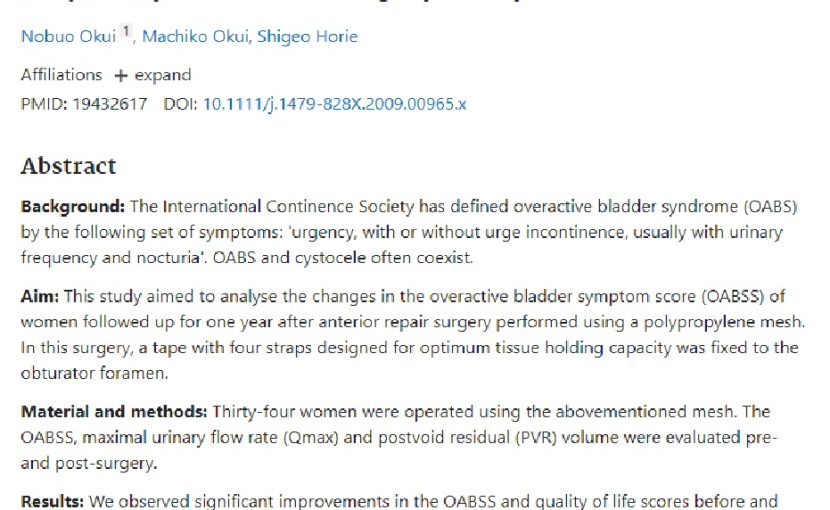
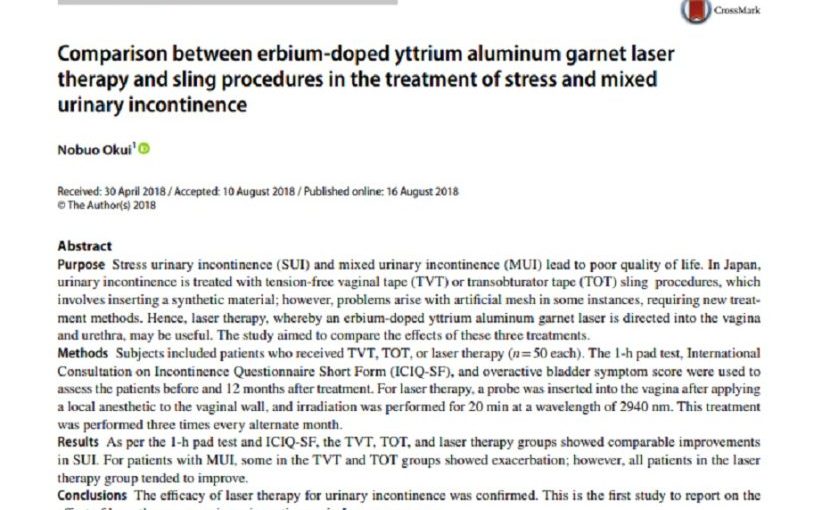
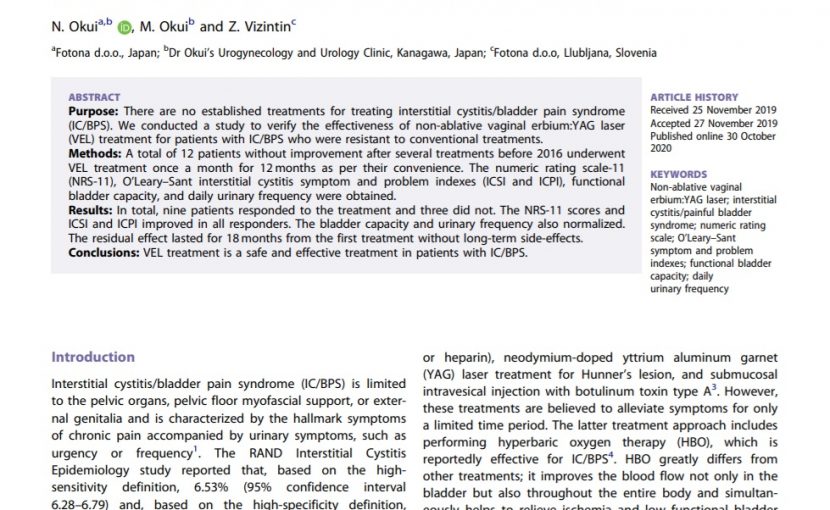
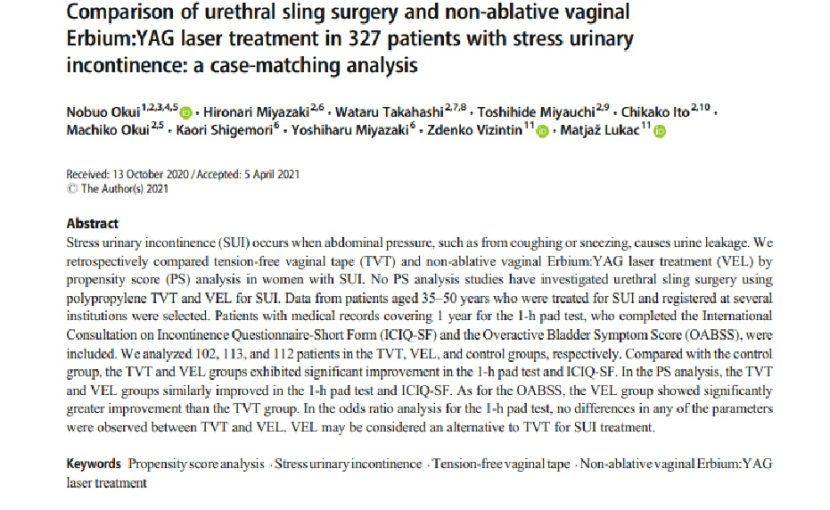
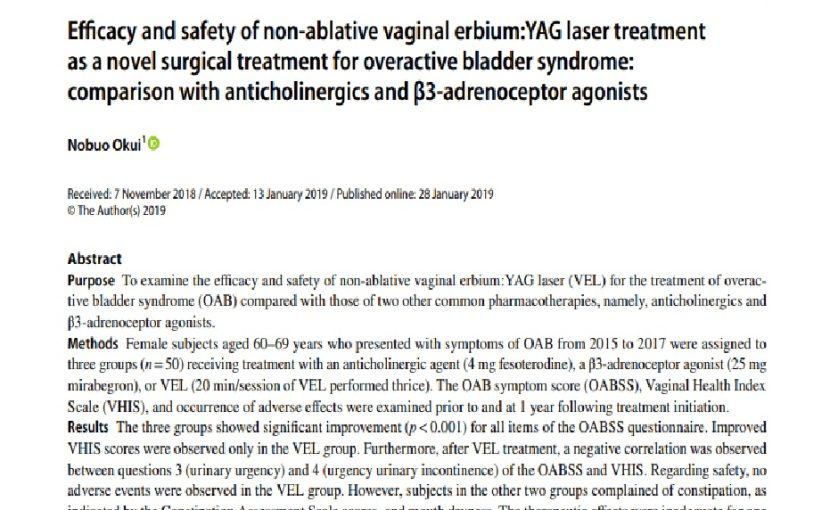

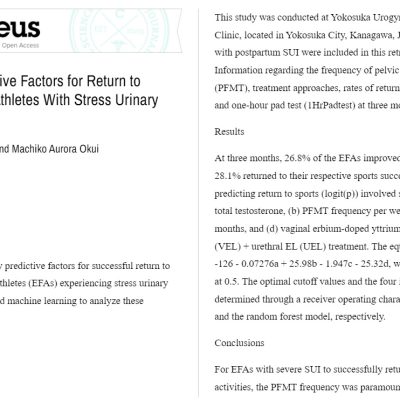
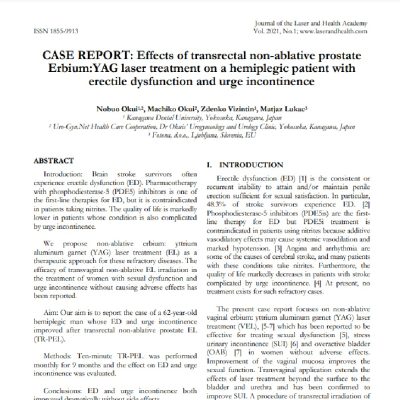
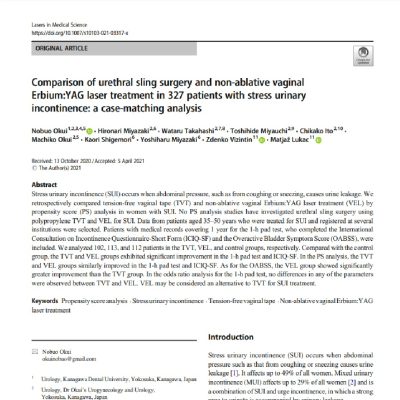
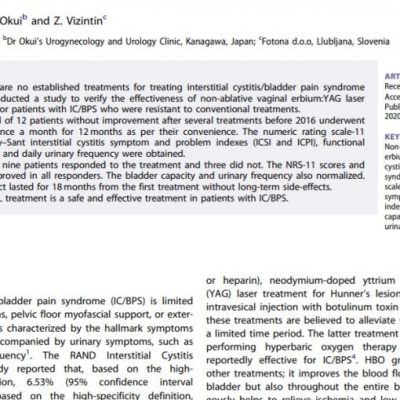
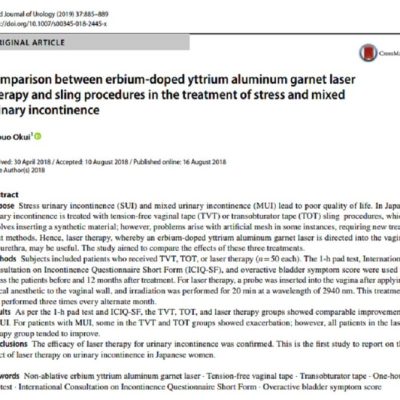
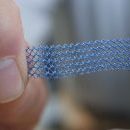
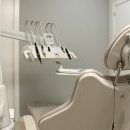
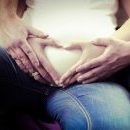
この記事へのコメントはありません。